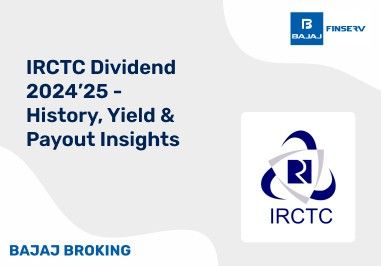Understanding Corporate Bonds
Corporate bonds are debt stocks issued by companies or corporations. The main aim of corporate bonds is to help these corporations raise funds from the public. This means that when an investor buys a company’s corporate bond, they are lending money to the company. The company, in return, commits legally to pay interest on the principal amount, known as the face value or par value and usually pays the entire amount back when the bond matures. The interest paid by the corporation is done annually or semi-annually at a predetermined rate, known as the coupon rate.
Corporate Bond Market Insights
Record Fundraising: Indian companies raised ₹10.67 trillion through corporate bonds in 2024, marking a 9% increase from 2023.
Corporate Bond Issuances: Between April and December 2024, corporate bond issuances totaled ₹7.3 lakh crore, averaging ₹0.8 lakh crore per month, an increase from ₹0.66 lakh crore during the same period in the previous year.
Long-Term Bonds: Issuances of bonds with maturities above five years rose by 19%, amounting to ₹98,200 crore in 2024.
Yield Trends: Yields on corporate bonds decreased by 25-50 basis points in 2024, following a decline in government bond yields.
Private Placements: 99.1% of corporate bond issuances in 2024 were through private placements, reflecting the preference for this method over public placements.
Outlook
The Indian corporate bond market is set for continued growth in 2025, driven by strong institutional demand, expected rate cuts, and a shift towards long-term bonds. While the market remains undercapitalized compared to global standards, the inclusion of Indian government bonds in global indices and rising credit growth are expected to fuel issuance, with sustained expansion likely as investor appetite grows.
Since corporate bonds are backed by the corporation’s cash flow and assets, it is considered a less risky investment when compared to stocks. Companies with higher credit ratings are less risky but offer lower interest rates, whereas companies with lower credit ratings are riskier but offer higher interest rates.
There are 5 types of corporate bonds:
Investment-grade bonds: Issued by financially stable companies having high credit ratings, the bonds offer lower interest rates.
High-yield or Junk bonds: Issued by companies with lower credit ratings. These bonds offer higher interest rates because they pose a higher risk for investors.
Convertible bonds: Here, investors get the option to convert the bonds they hold into a certain number of the company's shares. This is done at a predetermined conversion ratio.
Callable bonds: With callable bonds, the issuing company can redeem the bonds before their maturity dates, thus benefiting the company when interest rates decrease after the bond issuance.
Zero-coupon bonds: There are no regular interest payments in zero-coupon bonds. However, investors can invest in these bonds at a discount on their face value, which can eventually reach the full face value at maturity. This provides investors with lump sum funds.
Additional Read: Difference Between Cash Flow and Fund Flow
Assessing Credit Rating and Risks
The credit rating analysis of a company helps in assessing a company's ability to pay its debts. This assessment is done by an independent credit rating agency like Moody’s, Fitch or Standard and Poor’s (S&P). The ratings are graded with letters with AAA at the top and C and D at the bottom. Credit ratings help investors determine the level of risk that is involved in lending money to the company. Credit rating analysis can also be carried out for national and state governments as well as government agencies.
The higher the credit rating of a company, higher are the chances that it will pay its debts back without any difficulty. However, if a company’s credit rating is low, the more the chance that it will struggle to pay back its debts. If the credit rating of a company is really low, then it indicates that the company is in serious financial trouble.
A company’s credit risk indicates the potential for a lender to lose money to it if they decide to lend the company funds. The higher the credit risk of a company, the more the chances of a lender losing money to it. This credit risk is measured keeping in mind the company’s credit history, capital, capacity to repay, the collateral involved and the loan conditions.
Evaluating the Issuing Company's Financial Health
To evaluate an issuing company’s financial health, there are several financial ratios that investors can look at. In such a context, standalone numbers like the total debt or net profit won’t be as useful as these financial ratios. Observing the trends of a company's financial ratios helps investors see whether the company’s financial standing is improving over time.
Investors or lenders must evaluate a company’s financial health to gauge its creditworthiness and capacity to repay loans to minimize losses and risks.
Below is a list of the different ways to analyse an issuing company’s financial health:
Financial Statements:
There are 3 main types of financial statements of a company that indicate its financial performance over a given period.
Balance Sheet: Lists a company’s assets and liabilities and helps measure its liquidity and solvency.
Income Statement: Holds the summary of a company’s revenue and expenses over a certain period and indicates the company’s profit/loss
Cash Flow: Follows a company’s cash inflows and outflows and indicates how the company generates and uses this cash flow.
Financial Ratios:
The financial ratios of a company consist of:
Analyzing Interest Rates and Yield
As an investor or lender, it is important to understand the terms corporate bond yields and interest rate.
Corporate bond yields indicate the return an investor or trader receives from investments like stocks or bonds. When we talk about corporate bond yields in terms of bonds or any debt security, is expressed as yield-to-maturity or YTM and covers the payments of interest or coupon. YTM means the total return that the holder of the bond might receive at the time of the maturity of the bond. The yield is determined by the rate of interest agreed upon by the bond issuer.
The term interest rate is also a common word used in debt securities. When we talk about corporate bonds, we talk about an investor who becomes the lender to a corporation or company selling the bond. In terms of bonds, the interest rate is also known as the coupon rate. The coupon rate is an indicator of the rate at which periodic, usually either semi-annually or annually, payments are made based on the borrowed principal. This payment is received by the investor in return for buying the bond by the company or corporation.
Considering Bond Duration and Maturity
Bond duration:
The bond duration measures how sensitive a bond’s price is to changes in interest rates. This is done by calculating the average time in which all the interest and principal payments are received. If the duration is long, the interest sensitivity is greater.
The prices of bonds are always affected by the interest rates since the higher the interest rates, the lower the bond prices, and vice versa. However, the depth of this effect also depends on factors like the time left until bond maturity, coupon payments’ size, and the value of the principal.
Bond Maturity
The bond maturity is the date on which the investors get their principal amount back and the obligation of the company that sold the bonds ends. In short, the bond maturity indicates the lifetime of a bond.
When investing, a bond’s maturity is a crucial consideration that investors take into account before making a final decision.
There are three types of bond maturity:
Short-term: This consists of bonds that mature in one to three years.
Medium-term: Consists of bonds that attain maturity between 4 to 10 years.
Long-term: These are the bonds that usually take more than 10 years to mature.
Tax Implications of Corporate Bond Investments
There are three ways in which a corporate bond is taxed and they are listed below:
Interest
The interest that is earned by an investor attracts both a federal income tax and a state income tax. Two aspects help the bond owner calculate the tax owed on it. These include the size of the payment as well as the timing of the payment.
Capital Gains
When compared to the taxes owed on interest, the taxes owed on capital gains/losses are less traditional. To receive capital gain on a bond, an investor will have to sell the bond before its maturity. If this is undertaken, then the amount the investor gains over the original principal price is considered a capital gain. This excess amount is then taxed at the investor's ordinary income tax rate.
Issue Discount
In cases where a bond is sold at a price less than the par value, the difference between this discounted price and the original par value is a taxable amount. As a tax-on-issue discount is slightly more complicated, investors should consult a tax professional before purchasing a discounted bond.
Diversification Strategies in Corporate Bond Portfolios
There are three ways in which investors can incorporate a bond diversification strategy.
By Bond Type:
There are many types of bonds in India. Investors must understand them and choose the ones that align with their financial goals. Below is a list of bond types in India:
Investment-grade bonds: are issued by reliable companies that have a high credit rate. They offer lower rates.
Convertible bonds: Such bonds can be converted into company shares at a predetermined conversion ratio.
High-yield bonds: Riskier bonds issued by companies with lower credit ratings, these bonds have high interest rates to offset the risk.
Callable bonds: Companies can redeem such bonds before they mature.
Zero-coupon bonds: No regular interest payments but these bonds are issued at a discount.
Bond Maturity
There are three types of bond maturity:
Short-term: This consists of bonds that mature in one to three years.
Medium-term: Consists of bonds that attain maturity between 4 to 10 years.
Long-term: These are the bonds that usually take more than 10 years to mature.
Investors must diversify along these lines as well to ensure that at some stage or the other, a bond matures in their portfolio
Bond Sector
Never place all your eggs in one basket. Certain sectors are more susceptible to market volatility than others. Hence, investing in different sectors can offset any potential losses from bonds in one sector with potential gains in bonds from other sectors.
Monitoring and Reviewing Investments
Investors must stay on top of their investments in the corporate bond market and with regular monitoring and reviewing them, this can easily be done. Here are a few ways in which this can be achieved.
When reviewing investments
Tips to monitor investments regularly
Monthly disclosures: Investors should keep checking their consolidated account statements regularly as this will help them monitor returns better.
Take the help of investment apps: There are several apps available free of cost that help with portfolio tracking. Investors can make use of them at any time.
Regular reviews: Investors should conduct monthly/quarterly reviews of their investments to stay on top of any developments in their securities.
Professional advice: Consulting a financial advisor is another way to get guidance on monitoring for investors. These professionals will help guide investors if in case the latter wants to make any changes to their investment strategy.
Conclusion
Investing in bonds might be a safer option considering the cash flow and the assets of the bond issuing company, but several aspects need to be kept in mind when undertaking an investment in bonds as well. This is why we have noted down everything that investors might need to know before they decide to invest in bonds. Investors also need to do their research and make informed decisions so that they can steer clear of any potential losses.
Disclaimer: Investments in the securities market are subject to market risk, read all related documents carefully before investing.
This content is for educational purposes only. Securities quoted are exemplary and not recommendatory.
For All Disclaimers Click Here: https://bit.ly/3Tcsfuc













